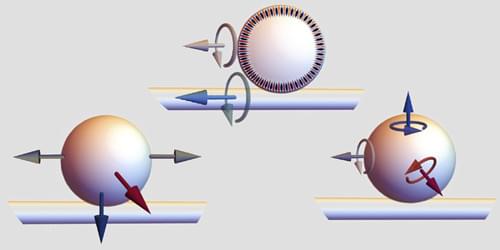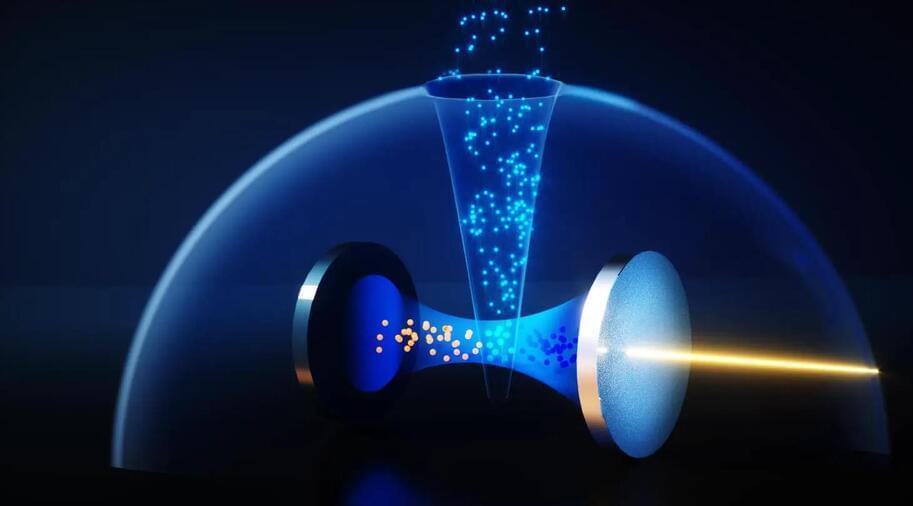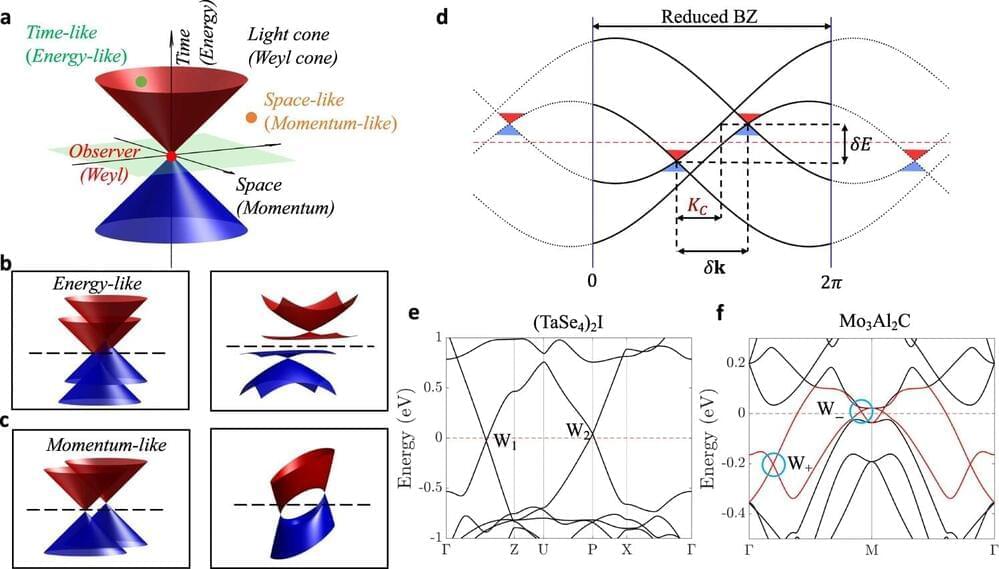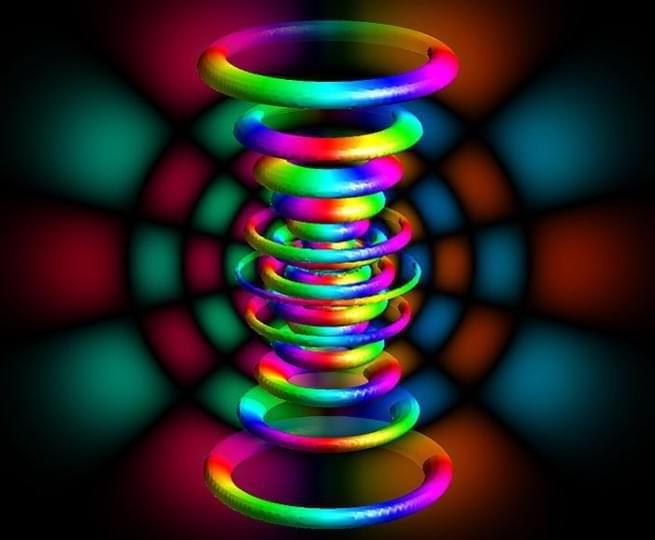A new model describes the range of forces and torques that light in a fiber can impart on dielectric particles nearby, even in the absence of helical light polarization.



He thinks about Robert Oppenheimer and the Manhattan Project that led to the atomic bomb, Hiroshima, and Nagasaki, and the current state of mutually assured destruction (MAD). It started with a science experiment to split the atom and soon the genie was released from the bottle.
I think of the arrival of generalized AI like ChatGPT as being equivalent to the revolution brought on by the invention of movable type and the printing press. Would the Reformation in Europe have happened without it? Would Europe’s rise to world dominance in the 18th and 19th centuries have resulted? The printing press genie uncorked led to a generalized knowledge revolution with both good and bad consequences.
The future uncorked AI genie with no guidance from us could, in answering the question I asked at the beginning of this posting, see humanity as the greatest threat to life on the planet and act accordingly if we don’t gain control over it.

Researchers at Caltech have discovered a new phenomenon, “collectively induced transparency” (CIT), where light passes unimpeded through groups of atoms at certain frequencies. This finding could potentially improve quantum memory systems.
A newly discovered phenomenon dubbed “collectively induced transparency” (CIT) causes groups of atoms to abruptly stop reflecting light at specific frequencies.
CIT was discovered by confining ytterbium atoms inside an optical cavity—essentially, a tiny box for light—and blasting them with a laser. Although the laser’s light will bounce off the atoms up to a point, as the frequency of the light is adjusted, a transparency window appears in which the light simply passes through the cavity unimpeded.

Northeastern researchers have made what they describe as a groundbreaking discovery in the field of quantum mechanics.
Wei-Chi Chiu, a postdoctoral researcher at Northeastern reporting to Arun Bansil, university distinguished professor of physics at Northeastern, tells Northeastern Global News that his team has published a novel study examining the nature of a specific class of subatomic particles, whose very existence has eluded quantum physicists for nearly a century.
Chiu and his colleagues propose a new theoretical framework to explain how these particles, called Weyl fermions, interact with each other in certain materials. The findings, published in Nature Communications earlier this month, look beyond the framework of Albert Einstein’s theory of relativity to probe these mysterious particles, Chiu says.

Encoding breakthrough allows for solving wider set of applications using neutral-atom quantum computers. QuEra Computing and university researchers have developed a method to expand the optimization calculations possible with neutral-atom quantum computers. This breakthrough, published in PRX Quantum, overcomes hardware limitations, enabling solutions to more complex problems, thus broadening applications in industries like logistics and pharmaceuticals.

To test this idea, the researchers studied the conditions of the extremely early universe. When our cosmos was very young, it was also small, hot and dense. In that youthful cosmos, all forms of matter and energy were ramped up to unimaginable scales, far greater than even our most powerful particle colliders are capable of achieving.
The researchers found that in this setup, gravitational waves — ripples in the fabric of space-time generated by collisions between the most massive cosmic objects — play an important role. Normally, gravitational waves are exceedingly weak, capable of nudging an atom through a distance less than the width of its own nucleus. But in the early universe, the waves could have been much stronger, and that could have seriously influenced everything else.
Those early waves would have sloshed back and forth, amplifying themselves. Anything else in the universe would have gotten caught up in the push and pull of the waves, leading to a resonance effect. Like a kid pumping their legs at just the right time to send a swing higher and higher, the gravitational waves would have acted as a pump, driving matter into tight clumps over and over again.
What does quantum computing have in common with the Oscar-winning movie “Everything Everywhere All at Once”? One is a mind-blowing work of fiction, while the other is an emerging frontier in computer science — but both of them deal with rearrangements of particles in superposition that don’t match our usual view of reality.
Fortunately, theoretical physicist Michio Kaku has provided a guidebook to the real-life frontier, titled “Quantum Supremacy: How the Quantum Computer Revolution Will Change Everything.”
“We’re talking about the next generation of computers that are going to replace digital computers,” Kaku says in the latest episode of the Fiction Science podcast. “Today, for example, we don’t use the abacus anymore in Asia. … In the future, we’ll view digital computers like we view the abacus: old-fashioned, obsolete. This is for the garbage can. That’s how the future is going to evolve.”

Quantum objects make up classical objects. But the two behave very differently. The collapse of the wave-function prevents classical objects from doing the weird things quantum objects do; like quantum entanglement or quantum tunneling. Is the universe as a whole a quantum object or a classical one? Artyom Yurov and Valerian Yurov argue the universe is a quantum object, interacting with other quantum universes, with surprising consequences for our theories about dark matter and dark energy.
1. The Quantum Wonderland
If scientific theories were like human beings, the anthropomorphic quantum mechanics would be a miracle worker, a brilliant wizard of engineering, capable of fabricating almost anything, be it a laser or a complex integrated circuit. At the same token, this wizard of science would probably look and act crazier than a March Hair and Mad Hatter combined. The fact of the matter is, the principles of quantum mechanics are so bizarre and unintuitive, they seem to be utterly incompatible with our inherent common sense. For example, in the quantum realm, a particle does not journey from point A to point B along some predetermined path. Instead, it appears to traverse all possible trajectories between these points – every single one! In this strange realm the items might vanish right in front of an impenetrably high barrier – only to materialize on the other side (this is called quantum tunneling).

Physicists believe most of the matter in the Universe is made up of an invisible substance that we only know about by its indirect effects on the stars and galaxies we can see.
We’re not crazy! Without this “dark matter”, the Universe as we see it would make no sense.
But the nature of dark matter is a longstanding puzzle. However, a new study by Alfred Amruth at the University of Hong Kong and colleagues, published in Nature Astronomy, uses the gravitational bending of light to bring us a step closer to understanding.
